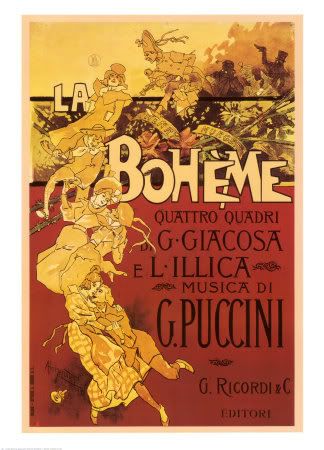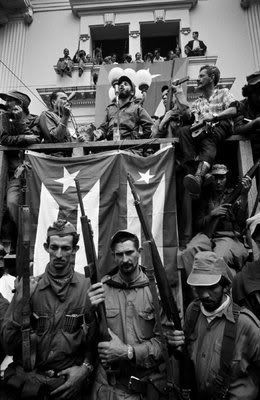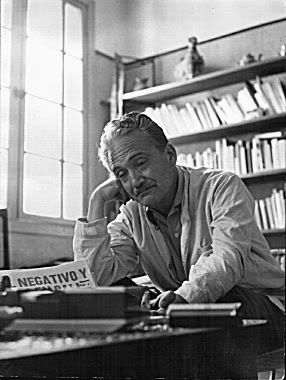Author's posts
Jan 18 2009
A Walk In The Lost World Of Quintana Roo
cross-posted from The Dream Antilles

The Coast of Quintana Roo, Mexico, between Bahia Soliman and Tankah
In 1958, Michel Peissel, who at age 21 was about to enter Harvard Business School, made a solo journey on foot from what would eventually become Cancun, Quintana Roo, Mexico, down the Caribbean Coast to Belize, which he described in his book, The Lost World Of Quintana Roo.
Join me in this Lost World.
Jan 18 2009
Monday Evening: A Time For Smudging And Cleansing
cross-posted from The Dream Antilles
Monday evening, January 19, 2009, is the last night of the Bush Administration. This could be a time to exhale and to celebrate having survived eight long, lawless, disgraceful years, a period that will go down in history as the US’s worst administration. But the big party won’t begin until after the Inauguration. We will want to celebrate a hopeful New Beginning rather than the final moments of Bush. So it makes sense, then, that Monday evening should be used to prepare for the New Beginning.
This brief essay is about a traditional way to prepare through cleansing and smudging.
Many North American indigenous traditions purify and set the stage for ceremonies by smudging. Smudging is the simple practice of burning particular plants and of allowing the smoke to purify and clear. You can purify and clear people, places, buildings, and in my view, entire nations and planets. This is mostly a matter of your intentions and having the right kind of smoke.
For example, you might remember when Guatemalan Mayans burned incense to cleanse sacred space after Bush visited a pyramid in their country. And many of you might have personally experienced how the Original Americans burn sage, cedar, and/or sweet grass to cleanse participants before and during ceremonies. These same sacred plants are also used to prepare the Sweat Lodge. Mayans have for many years burned copal so that its smoke might carry prayers to heaven. And the Q’ero, descendants of the Inca, burn palo santo both to cleanse and sanctify. These kinds of smoke have special qualities, and they have been used for centuries especially to purify and cleanse.
Some people have said that the White House should be smudged with sage. This is a good idea. But it’s too limited. After the past eight years, the entire nation deserves to be cleared, cleansed, purified, and sanctified before the new administration begins. Monday night would be a perfect time to do just that.
How do you do it? First you need to make special, sacred smoke. You can light a smudge stick (white sage, sweet grass, cedar and/or lavender) and then, after it catches, blow it out. You don’t want a fire, you want the smoke. Or you can light in a sand filled container or seashell (do not use glass) sage, sweet grass, cedar and/or lavender, and after it flames a bit, blow out the flames, making a nice, dense plume of smoke. Or you can light a charcoal disc (be sure this is in something that is well insulated so you don’t burn yourself) and then drop copal or sage or cedar on top of the burning coal, making a beautiful, thick, continuous cloud of smoke. Or you can light a piece of palo santo (it’s a stick), let it get hot and red, and then blow out its flame to make an aromatic, sweet smelling smoke. Be sure to be safe with this. You want to purify with smoke, you don’t want to burn yourself or destroy your home or start a forest fire.
Then, lift the smoking object high over your head, and let the smoke spread. If you’re in the house, be sure to open the doors and to walk the smoke throughout the house. If you’re outside, hold the smoke up and let the wind carry the smoke. If you want to purify yourself, cup the smoke with your hands and bring it over and around you.
Once you’ve got the smoke, focus on your intention for the smoke to cleanse and clear and purify and offer your thoughts or prayers. These thoughts, your intentions, are also an essential part of smudging. You don’t have to say them aloud. Thinking them is often enough.
What I plan to say goes something like this (it always changes on the spot):
Father Sky, Star Brothers and Sisters, Pachamama, Sweet Mother Earth, thank you for this day and for this wonderful smoke and for cleansing and purifying me, my home, this land, and this country, thank you for teaching us to walk in beauty and in harmony on the earth and in peace with other people and nations, show us the beauty way, and help us as a nation to be compassionate, understanding, courageous, and just. Let it be.
Please join me on Monday evening. Our nation deserves nothing less.
Jan 17 2009
A Love Supreme, Love Supreme, Love Supreme
cross-posted from The Dream Antilles
Last night I found myself on a Continental 757 heading again for Newark, city of my birth, one of those tough places, a gritty, rusty place I return to repeatedly.
To my amazement, one of the audio selections available on the flight was John Coltrane’s seminal 1964 recording “A Love Supreme.” This album is one of Coltrane’s greatest works, and it is repeatedly listed as one of the greatest jazz albums of all time. Why was I amazed? True, it was the 48th album of the 50 available. It should have been first. True, it was the 2002, redigitalized version (I am such a snob). It should have been the original vinyl. But forget all of that, there it was. I hadn’t listened to it from beginning to end without interruption in more than 30 years. So yesterday I listened again to “A Love Supreme.” What a delight.
The recording has four parts: “Acknowledgement” (which contains the famous Love Supreme, Love Supreme mantra), “Resolution”, “Pursuance”, and “Psalm.” The recording (can we still call it an album or make believe it’s classical and call it a suite?) is the culmination in many ways of what Coltrane began in Giant Steps and Chasing the Trane. It’s modal. It’s free. It’s totally inventive. It’s astonishing. “Psalm,” the final part, the part I love most, is what Coltrane calls a “musical narration” of the devotional poem he included in the liner notes. In other words, Coltrane “plays” the words of the poem, but does not actually speak them. In this you can hear the sounds of devotional sermons of African-American preachers, Jewish and Muslim chanting, African singing, sounds of the street, the hum of Newark or Philadelphia, the voices from Coltrane’s heart. Coltrane’s solo ends with him playing the words “Elation. Elegance. Exaltation. All from God. Thank you God. Amen.” I say, “Amen, Amen, Amen.”
What a striking, incredible performance. How can it be that 44 years after it was recorded, “A Love Supreme” remains so fresh, alive, exciting, expressive, deep?
A Love Supreme was recorded one December evening in Rudy Van Gelder’s legendary studio in Englewood Cliffs, N.J. Pianist McCoy Tyner remembers the unusual, almost magical atmosphere surrounding the session. “Rudy that day dimmed the lights in his studio. I’d never seen him do that and it sort of set an atmosphere. There was just something very, very special about that particular session.”
Drummer Elvin Jones says Coltrane “never wrote out any music for us. When he played we more or less had to imagine, or feel, how to interpret the song. And it got to the point where I felt I was almost part of his mind, almost telepathic in a way.”
The quartet, which also included bassist Jimmy Garrison, needed little more than the seed of a melodic idea when it hit the studio. Tyner adds: “We had been playing some of that music and we didn’t know what it was going to be until we got into the studio. And then it all came together.”
Coltrane constructed the suite’s main theme around a simple four-note pattern – based on the words “a love supreme.”
The playing of the quartet on this recording is unbelievably wonderful. From the very first sound of a gong on “Acknowledgement”, through the initial four notes Garrison plays on bass, through incredible drum solos by Elvin Jones (how can he do all of that?), through McCoy Tyner’s unbelievably complex piano dexterity, to Coltrane’s final, mind altering solo, the quartet at once plays together and individually, and it stretches the music out beyond anything rote, beyond the anticipated, beyond the possible, into the ionosphere. Remember please that this is music from the era when jazz players were justifiably revered for their genius. The skilled playing, the inventiveness of the improvisation, the faith of the players in each other, their mutual support of the themes culminates in my head shaking slowly, side to side, bliss, joy, ecstacy, nirvana, Om ah Hum.
As I fly toward Newark, my birthplace, with this quartet in my ears, I remember the Newark of the ’60’s. The riot. The killing. The incessant crimes. The discrimination, poverty, unemployment, oppression, racism. The Projects. The desperation. I can hear all of that in this music, welling up, speaking out, clenching its fist, and then opening it again in transcendence. And I wonder, “What would Coltrane have made of Obama?”
Jan 03 2009
A Century Of Progress
cross-posted from The Dream Antilles

Well, not really. On my drive home from running errands, I heard part of the Metropolitan Opera’s Saturday broadcast of La Boheme. It amazes me that an Opera set in 1830 and written in 1896, would have a setting that is so very timely in 2009.
Please join me in the nosebleed seats.
Dec 31 2008
Marking Half A Century Of Resistance
cross posted from The Dream Antilles

50 Years Ago, Fidel Castro gives a 4 hour speech on the road to Havana
In a predictable and conflicted article, The New York Times, the newspaper of record, noticed that today the Cuban Revolution is celebrating its 50th Anniversary, its Golden Anniversary.
The Times writes in the fourth paragraph of an article focusing on how four bodies, presumably from Cuba but perhaps from elsewhere, washed onto a Florida beach in August and have not yet been identified:
Fifty years ago today, many Cubans cheered when Fidel Castro seized power in Havana, and even now the revolution attracts many fans – as evidenced by the Canadian tour agencies advertising trips “to celebrate five decades of resilience.”
But the bodies [the unidentified ones in the morgues] speak to a different legacy. Here in South Florida, where roughly 850,000 Cubans have settled over the years, repeated waves of painful exile and family separation define the Castro era. The revolution never met their hopeful expectations, the island they love has slipped into decay, and for many, this week’s golden anniversary provides little more than a flashback to traumas, old and new.
What a wonderful setting for remembering the 50th Anniversary of the Cuban Revolution. In a morgue. With bodies that might come from the US. That’s what the Times feels that Cuba deserves.
Of course, the senseless half century US blockade and the economic failure of the USSR and a continual US policy of economic destabilization might have something to do with the revolution’s present economic difficulties. But never mind seeing the many causes of Cuba’s complicated isolation and problems. It was “the revolution [that] never met their hopeful expectations…” and, according to the Times, not other factors.
The Times continues:
But for many, the revolution’s 50th anniversary has inspired a period of reflection. Cubans across Florida say they are mourning privately, or trying to forget, and formal commemorations are being kept to a minimum. If Miami in the 1980s was a place of militants, where “Havana vanities come to dust,” as Joan Didion famously wrote, today it is also a home to newer arrivals who ask: Must the pain go on?
A poll released this month by Florida International University shows that 55 percent of Cubans in Florida favor lifting the United States embargo against Cuba, up from 42 percent a year ago. It is the first time a clear majority has held that position since the survey began in 1991.
Even among those who support the 46-year-old embargo, like Senator Mel Martinez, a Republican, continued damage to families has become a more prominent concern.
And while we’re at it, let’s just ignore, in apportioning the causes for “private mourning,” the Bush administration’s severely restricting the amount of money US people can send to their relatives in Cuba and its clinging to a blockade that causes “continued damage” to families separated by the Florida Straits.
Even the Goldfather II had a clearer, more nuanced understanding of the Cuban Revolution.
There are many, many reasons to take serious issue with the Cuban government’s record on human rights and freedom of expression and lack of democracy. I don’t deny that. But it’s a mistake, a tragic mistake to overlook the fact that 50 years ago Cuban Dictator Fulgencio Battista was a US puppet and his nation was ripe for a popular Revolution. He was overthrown by a home grown revolution led by Fidel Castro. And it’s equally a mistake to overlook that for half a century a mere 90 miles away from Florida, Castro and his government, who nationalized and seized many foreign owned properties, have weathered exploding cigars, the Bay of Pigs, assassination attempts, destablization, fly overs, threats, a blockade, isolation, and persistent attempts to overthrow him from the most powerful nation on earth.
Credit where credit is due.
Nobody could have predicted 50 years ago that in 2008 Cuba would celebrate the Golden Anniversary of its Revolution in continued isolation. And nobody could have predicted that the US’s policy would be such a gigantic failure.
Dec 30 2008
New Year 2009: Bring It On Home To Me
joyfully cross-posted from The Dream Antilles
“Bring It On Home to Me” is a 1961 soul song written and recorded by R&B singer-songwriter Sam Cooke. The song, about infidelity, was a hit for Cooke and has become a pop standard covered by numerous artists of different genres. It is one of The Rock and Roll Hall of Fame’s 500 Songs that Shaped Rock and Roll. Cooke’s recorded version has Lou Rawls singing responses as an uncredited background singer.
This song is considered by many historians of soul music to be the founding, or at least definitive soul song, as it provides the formula that is still popular today
The song itself is simple enough:
If you ever change your mind
About leavin’, leavin’ me behind
Oh, oh, bring it to me
Bring your sweet lovin’
Bring it on home to me, oh yeahYou know I laughed (ha ha) when you left
But now I know I’ve only hurt myself
Oh, oh, bring it to me
Bring your sweet lovin’
Bring it on home to me.
Yes, it’s simple. And there have been so many different versions. So many variations. So many different ways of playing and singing it. Many people have dug deed into their own understanding, their creativity, their desire to express themselves and have chosen this song. It is a truly remarkable vehicle.
It’s remarkable how each of the versions is at once the same. And very, very different.
And so, as an illustration of my 2009 resolution, to continue to explore my own voice, to find my own way of expression, to expand in creativity and inventiveness, I give you for your year end inspiration, Bring It On Home To Me, Ten+ Versions:
Dec 28 2008
Peru: In Search Of Arguedas
cross posted from The Dream Antilles

Jose Maria Aguedas (1911-1969) (photo by Jose Gushiken)
I have to begin with Mariategui, the street in Cuzco, Peru, and then the man.
We decided to take a cab to find Don Francisco’s new house in Cuzco, Peru. He is a Q’ero Shaman. We wanted to do a shamanic ceremony with him and his wife and eat lunch with them. We wanted to visit him at his home as he had visited us at ours in the US. He gave us the address. He gave us his cell number. He gave us a land mark. We ended up calling him on the cell phone to say, “We’re parked at the church. We don’t know where you are.” He walked down the hill and found us. Pointing, he said, that street is Mariategui. That’s where the bus goes into Centro. That’s where you have to walk. That’s where the house is.
Did he know who Mariategui was? Probably not. I forgot to ask him. I am quite certain that he never read him.
Please join me in Peru.
Dec 26 2008
Bush Giveth And Then Taketh Away
cross posted from The Dream Antilles
How very awkward. And how very typical. On December 24, Preznit Bush suddenly became concerned about appearances and revoked a pardon he gave New York real estate developer Isaac Toussie the day before, after reports surfaced that Toussie’s family gave almost $40,000 to Republicans.
Of course, the White House mouthpiece immediately took the story through a muddy spin cycle:
White House press secretary Dana Perino said neither Bush nor counsel Fred Fielding was aware of the GOP contributions from the father of Isaac Robert Toussie, who had been convicted of mail fraud and of making false statements to the Department of Housing and Urban Development. Perino said Bush had also been unaware of other aspects of the Toussie case that were revealed in news reports yesterday.
“Looking at the totality of the case, more could have been described to the president,” Perino said. “The political contributions certainly were not known. It raises the appearance of impropriety, so the president prudently decided not to go through with the pardon.”
Dec 20 2008
A Mississippi Supreme Court Dissenting Opinion Calls For Death Penalty Abolition
cross posted from The Dream Antilles
Mississippi has long supported the death penalty. So it is remarkable when a Mississippi Supreme Court Justice writes a dissenting opinion in a death penalty case that calls for the abolition of the death penalty. In Doss v. State (pdf), Justice Oliver Diaz, Jr., did just that, he called for the end of the death penalty.
The Sun Herald reports:
Outgoing Supreme Court Justice Oliver Diaz Jr.’s impassioned call for an end to the death penalty has drawn both criticism and praise.
In what was likely his departing dissent as his tenure on Mississippi’s highest court ends, Diaz says society finally must recognize that “even as murderers commit the most cruel and unusual crime, so too do executioners render cruel and unusual punishment.”
Jimmy Robertson, a Jackson attorney who served on the state Supreme Court from 1983 to 1992, said Diaz laid out a number of points, including that the death penalty is not a deterrent to murder, that were “pretty close to being irrefutable to anybody that’s objective on the question.”
The criticism in the Sun Herald article was provided not by Mississippians but instead solely by Kent Scheidegger, legal director for the pro-death penalty Criminal Justice Legal Foundation of Sacramento, a right wing, pro death penalty organization, who provided the usual shop worn generalities.
Dec 20 2008
Doing Time
cross posted from The Dream Antilles
As the holidays approach, I turn as I do every year to focus on those who are incarcerated. This isn’t the result of the religious injunction in Matthew 25:44 about visiting those in prison. It’s because my business is to defend people charged with serious crimes, and I’m painfully aware that when the defense doesn’t work, and it often doesn’t, the client pays with what the Thirteenth Amendment blandly calls “involuntary servitude.” That means being a slave of the state. For a long time. A time measured in years. And it’s as bad as it sounds.
Dec 12 2008
The Night Of The Ice (With Update And Gratitude)
cross posted from The Dream Antilles

Chatham, New York, SE of Albany
If I had one of those Weather Channel jackets, right now I could stand in the yard and narrate this essay. Then you’d be able to see me looking into the camera, the rain falling falling falling sideways from the sky, hitting the earth and everything else, and freezing. Immediately. Everything glistens in its coat of ice. Trees. Houses. Grass. The dog has ice chunks on her tail. Wind and rain blow into the microphone making a whooshing sound. It’s a special genre: Heavy Weather. Upstate, Eastern New York.
Dec 07 2008
Cuba Stifles Blog Freedom. Again.
cross posted from The Dream Antilles
Cuban Blogger Yoani Sanchez, the 2008 Gasset y Ortega Prize winner for digital journalism, and her husband, Reynaldo Escobar, have been forbidden by the Cuban government from attending a blogger conference in Cuba.
Join me 90 miles South of Miami.



